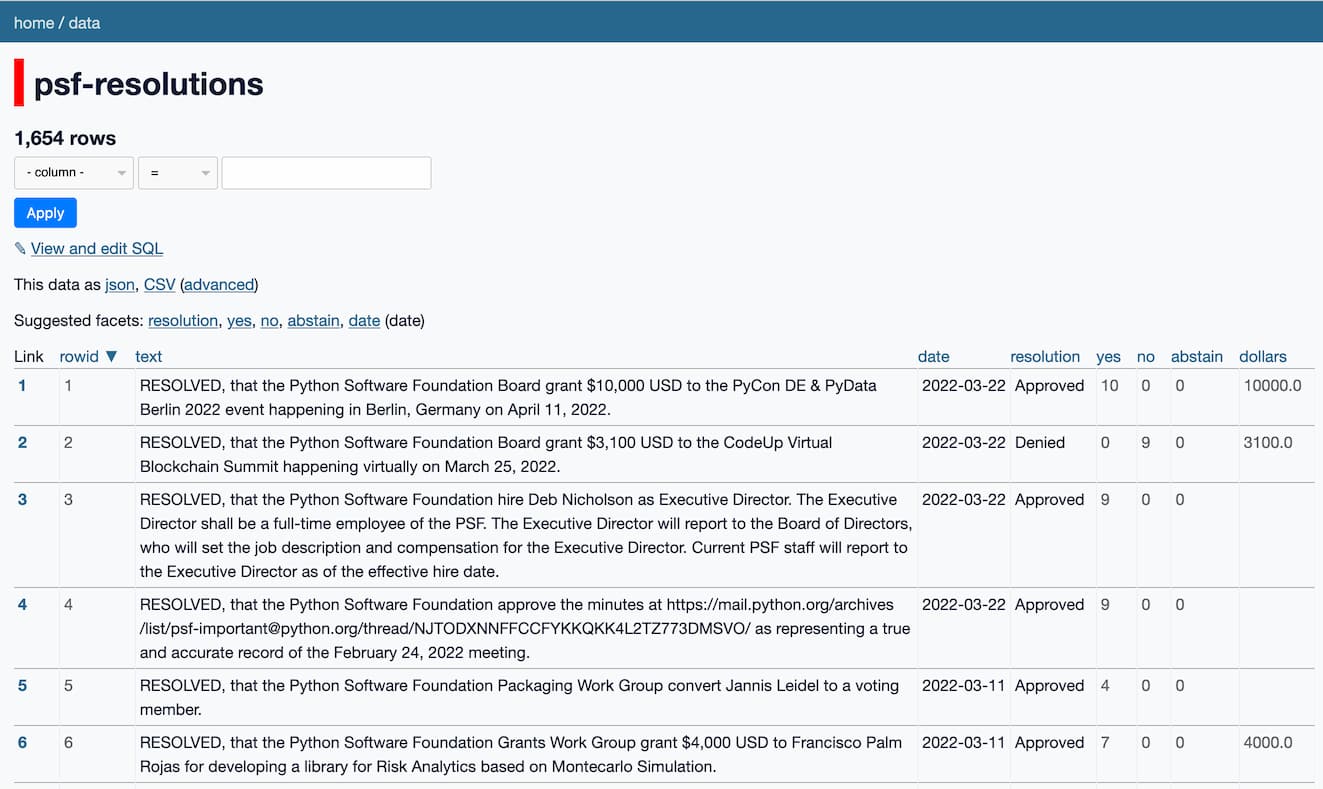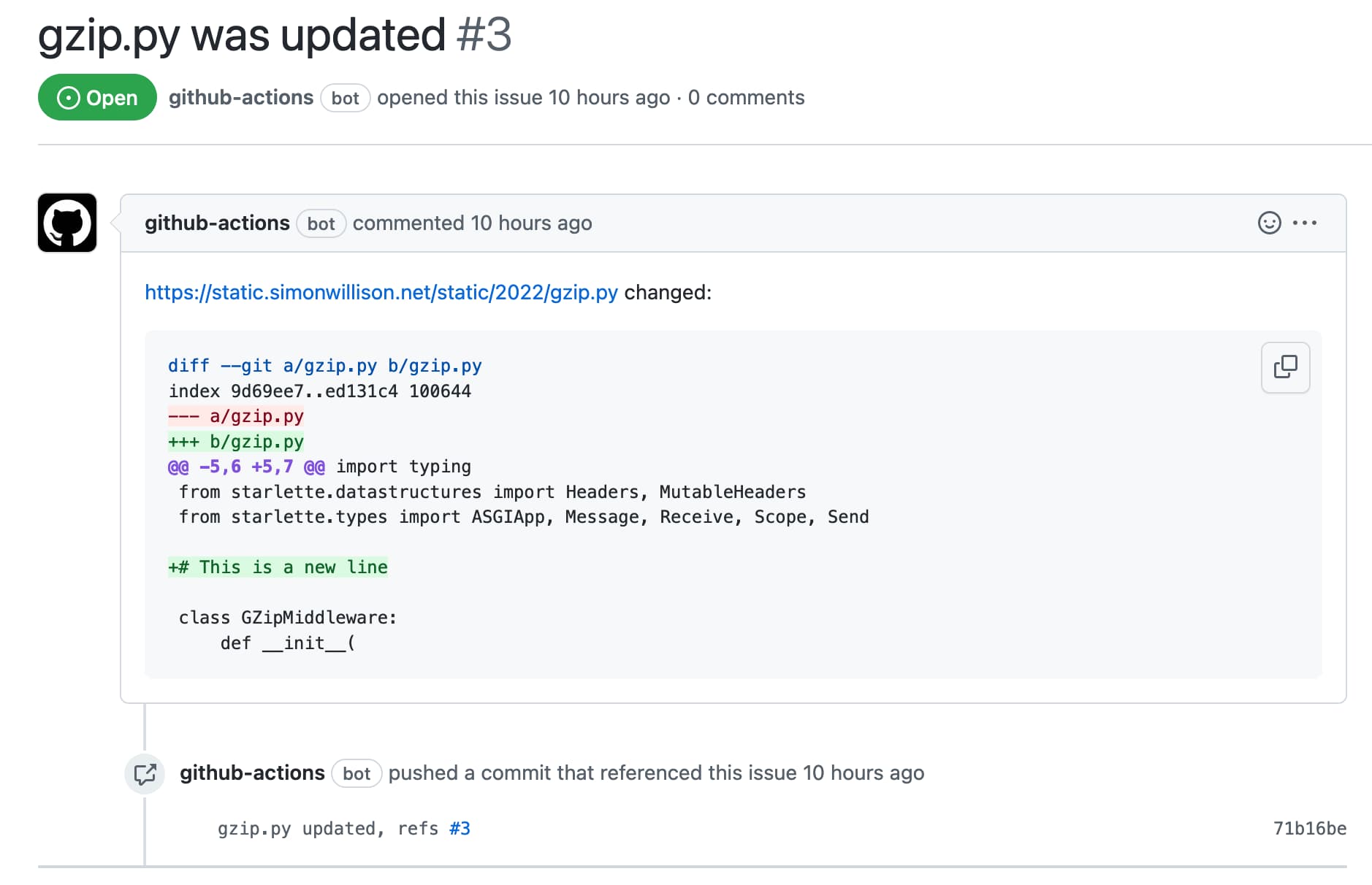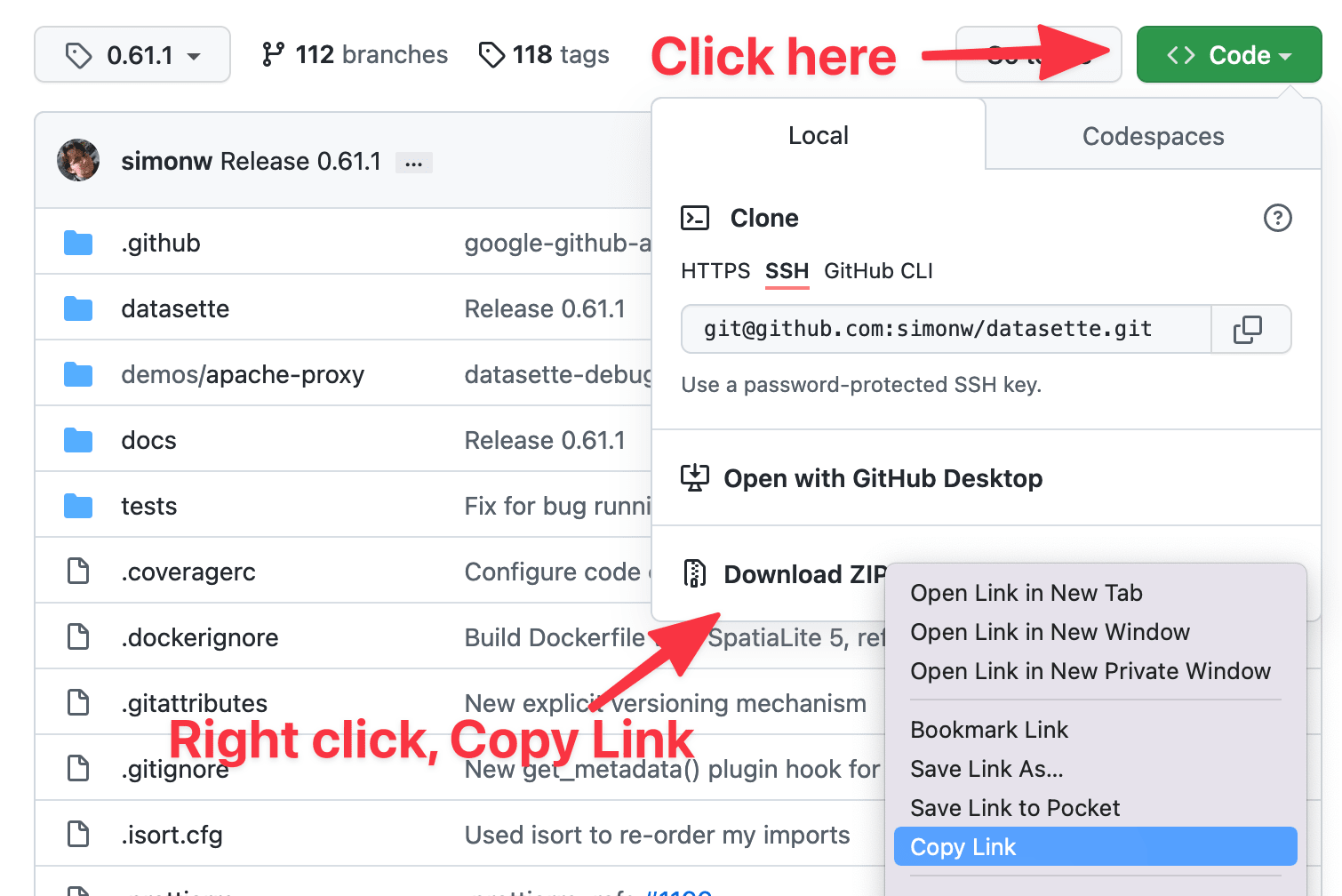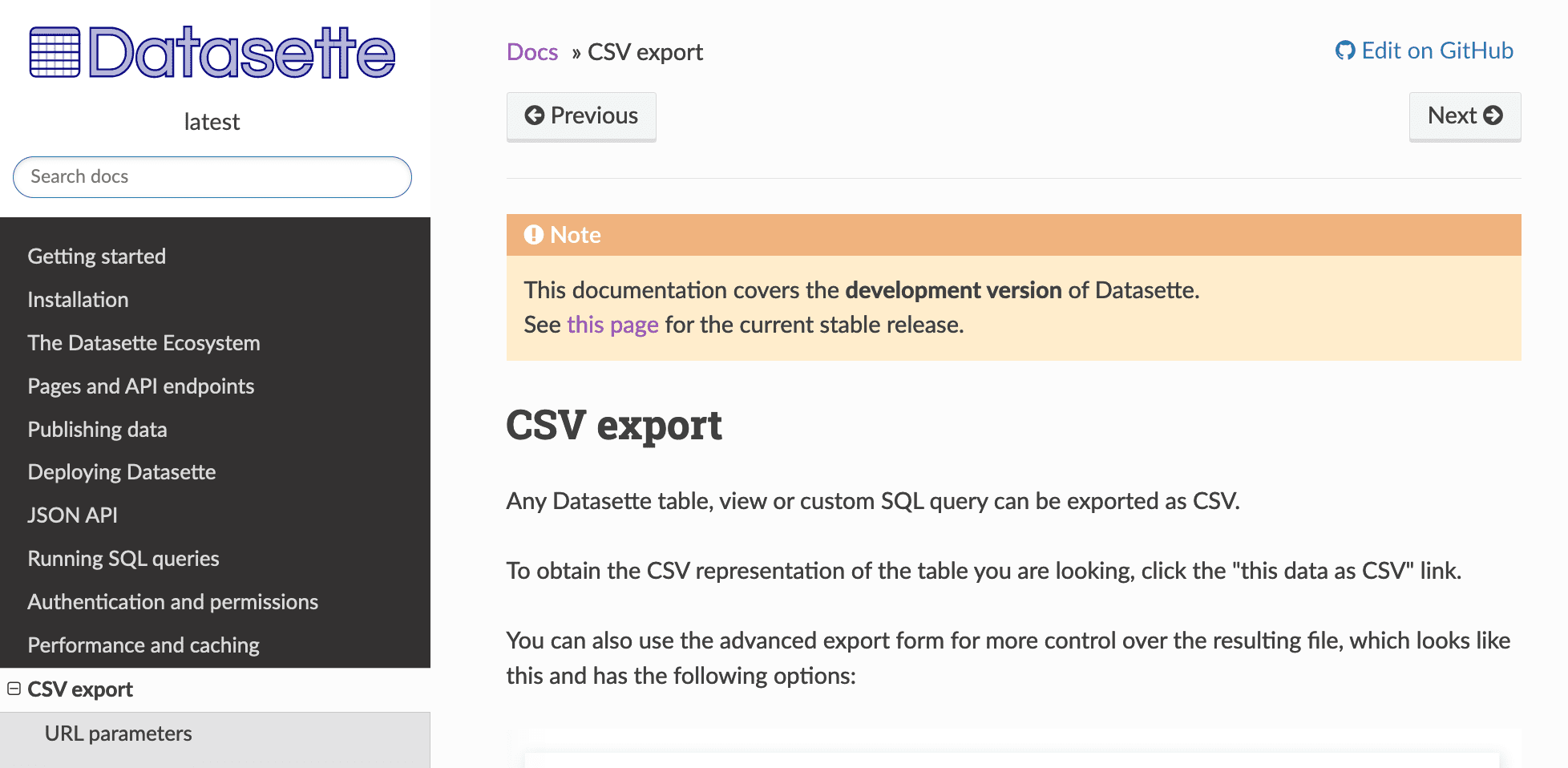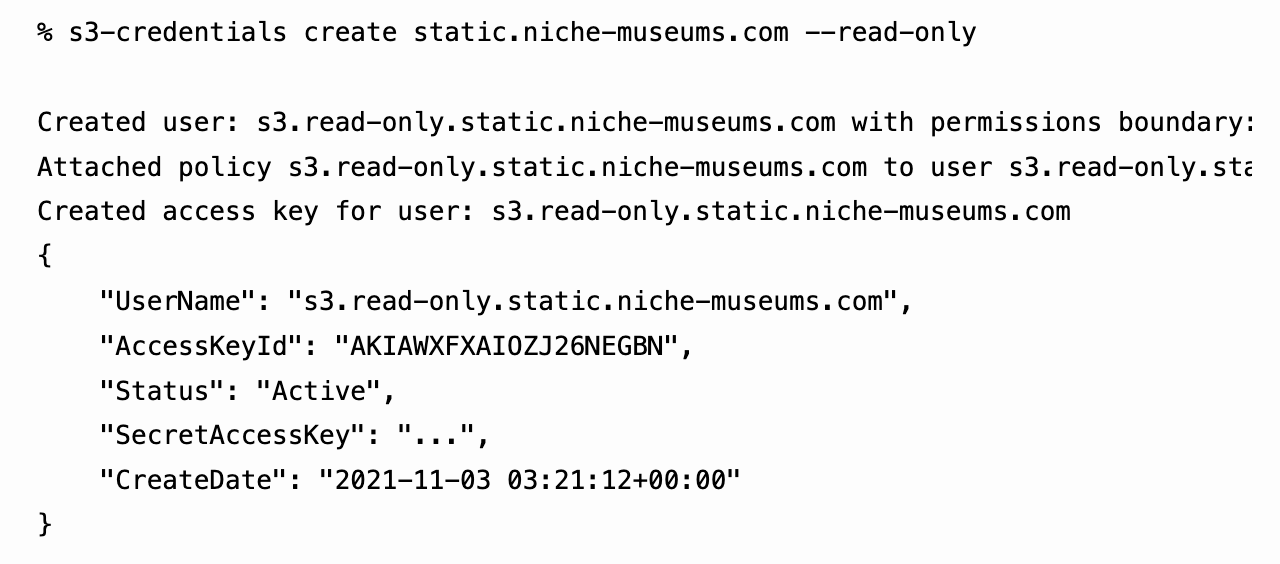1,216 posts tagged “python”
The Python programming language.
2022
Weeknotes: Joining the board of the Python Software Foundation
A few weeks ago I was elected to the board of directors for the Python Software Foundation.
[... 2,081 words]Packaging Python Projects with pyproject.toml. I decided to finally figure out how packaging with pyproject.toml works—all of my existing projects use setup.py. The official tutorial from the Python Packaging Authority (PyPA) had everything I needed.
Fastest way to turn HTML into text in Python (via) A light benchmark of the new-to-me selectolax Python library shows it performing extremely well for tasks such as extracting just the text from an HTML string, after first manipulating the DOM. selectolax is a Python binding over the Modest and Lexbor HTML parsing engines, which are written in no-outside-dependency C.
Cosmopolitan: Compiling Python. Cosmopolitan is Justine Tunney’s “build-once run-anywhere C library”—part of the αcτµαlly pδrταblε εxεcµταblε effort, which produces wildly clever binary executable files that work on multiple different platforms, and is the secret sauce behind redbean. I hadn’t realized this was happening but there’s an active project to get Python to work as this format, producing a new way of running Python applications as standalone executables, only these ones have the potential to run unmodified on Windows, Linux and macOS.
Announcing Pyston-lite: our Python JIT as an extension module (via) The Pyston JIT can now be installed in any Python 3.8 virtual environment by running “pip install pyston_lite_autoload”—which includes a hook to automatically inject the JIT. I just tried a very rough benchmark against Datasette (ab -n 1000 -c 10) and got 391.20 requests/second without the JIT compared to 404.10 request/second with it.
Compiling Black with mypyc (via) Richard Si is a Black contributor who recently obtained a 2x performance boost by compiling Black using the mypyc tool from the mypy project, which uses Python type annotations to generate a compiled C version of the Python logic. He wrote up this fantastic three-part series describing in detail how he achieved this, including plenty of tips on Python profiling and clever optimization tricks.
Benjamin “Zags” Zagorsky: Handling Timezones in Python. The talks from PyCon US have started appearing on YouTube. I found this one really useful for shoring up my Python timezone knowledge: It reminds that if your code calls datetime.now(), datetime.utcnow() or date.today(), you have timezone bugs—you’ve been working with ambiguous representations of instances in time that could span a 26 hour interval from UTC-12 to UTC+14. date.today() represents a 24 hour period and hence is prone to timezone surprises as well. My code has a lot of timezone bugs!
Bundling binary tools in Python wheels
I spotted a new (to me) pattern which I think is pretty interesting: projects are bundling compiled binary applications as part of their Python packaging wheels. I think it’s really neat.
[... 903 words]Weeknotes: Datasette Lite, nogil Python, HYTRADBOI
My big project this week was Datasette Lite, a new way to run Datasette directly in a browser, powered by WebAssembly and Pyodide. I also continued my research into running SQL queries in parallel, described last week. Plus I spoke at HYTRADBOI.
[... 1,434 words]Datasette Lite: a server-side Python web application running in a browser
Datasette Lite is a new way to run Datasette: entirely in a browser, taking advantage of the incredible Pyodide project which provides Python compiled to WebAssembly plus a whole suite of useful extras.
[... 4,800 words]sqlite-utils 3.26.1 (via) I released sqlite-utils 3.36.1 with one tiny but exciting feature: I fixed its one dependency that wasn’t published as a pure Python wheel, which means it can now be used with Pyodide—Python compiled to WebAssembly running in your browser!
PyScript demos (via) PyScript was announced at PyCon this morning. It’s a new open source project that provides Web Components built on top of Pyodide, allowing you to use Python directly within your HTML pages in a way that is executed using a WebAssembly copy of Python running in your browser. These demos really help illustrate what it can do—it’s a fascinating new piece of the Python web ecosystem.
Testing Datasette parallel SQL queries in the nogil/python fork. As part of my ongoing research into whether Datasette can be sped up by running SQL queries in parallel I’ve been growing increasingly suspicious that the GIL is holding me back. I know the sqlite3 module releases the GIL and was hoping that would give me parallel queries, but it looks like there’s still a ton of work going on in Python GIL land creating Python objects representing the results of the query.
Sam Gross has been working on a nogil fork of Python and I decided to give it a go. It’s published as a Docker image and it turns out trying it out really did just take a few commands... and it produced the desired results, my parallel code started beating my serial code where previously the two had produced effectively the same performance numbers.
I’m pretty stunned by this. I had no idea how far along the nogil fork was. It’s amazing to see it in action.
Automatically opening issues when tracked file content changes
I figured out a GitHub Actions pattern to keep track of a file published somewhere on the internet and automatically open a new repository issue any time the contents of that file changes.
[... 1,211 words]Weeknotes: Parallel SQL queries for Datasette, plus some middleware tricks
A promising new performance optimization for Datasette, plus new datasette-gzip and datasette-total-page-time plugins.
Useful tricks with pip install URL and GitHub
The pip install command can accept a URL to a zip file or tarball. GitHub provides URLs that can create a zip file of any branch, tag or commit in any repository. Combining these is a really useful trick for maintaining Python packages.
Glue code to quickly copy data from one Postgres table to another (via) The Python script that Retool used to migrate 4TB of data between two PostgreSQL databases. I find the structure of this script really interesting—it uses Python to spin up a queue full of ID ranges to be transferred and then starts some threads, but then each thread shells out to a command that runs “psql COPY (SELECT ...) TO STDOUT” and pipes the result to “psql COPY xxx FROM STDIN”. Clearly this works really well (“saturate the database’s hardware capacity” according to a comment on HN), and neatly sidesteps any issues with Python’s GIL.
typesplainer (via) A Python module that produces human-readable English descriptions of Python type definitions—also available as a web interface.
[history] When I tried this in 1996 (via) “I removed the GIL back in 1996 from Python 1.4...” is the start of a fascinating (supportive) comment by Greg Stein on the promising nogil Python fork that Sam Gross has been putting together. Greg provides some historical context that I’d never heard before, relating to an embedded Python for Microsoft IIS.
Mypyc (via) Spotted this in the Black release notes: “Black is now compiled with mypyc for an overall 2x speed-up”. Mypyc is a tool that compiles Python modules (written in a subset of Python) to C extensions—similar to Cython but using just Python syntax, taking advantage of type annotations to perform type checking and type inference. It’s part of the mypy type checking project, which has been using it since 2019 to gain a 4x performance improvement over regular Python.
Black 22.1.0 (via) Black, the uncompromising code formatter for Python, has had its first stable non-beta release after almost four years of releases. I adopted Black a few years ago for all of my projects and I wouldn’t release Python code without it now—the productivity boost I get from not spending even a second thinking about code formatting and indentation is huge.
I know Django has been holding off on adopting it until a stable release was announced, so hopefully that will happen soon.
Weeknotes: python_requires, documentation SEO
Fixed Datasette on Python 3.6 for the last time. Worked on documentation infrastructure improvements. Spent some time with Fly Volumes.
[... 1,497 words]2021
Annotated explanation of David Beazley’s dataklasses (via) David Beazley released a self-described “deliciously evil spin on dataclasses” that uses some deep Python trickery to implement a dataclass style decorator which creates classes that import 15-20 times faster than the original. I put together a heavily annotated version of his code while trying to figure out how all of the different Python tricks in it work.
TypeScript for Pythonistas (via) Really useful explanation of how TypeScript differs from Python with mypy. I hadn’t realized TypeScript leans so far into structural typing, to the point that two types with different names but the same “shape” are identified as being the same type as each other.
wheel.yml for Pyjion using cibuildwheel (via) cibuildwheel, maintained by the Python Packaging Authority, builds and tests Python wheels across multiple platforms. I hadn’t realized quite how minimal a configuration using their GitHub Actions action was until I looked at how Pyjion was using it.
Introducing stack graphs (via) GitHub launched “precise code navigation” for Python today—the first language to get support for this feature. Click on any Python symbol in GitHub’s code browsing views and a box will show you exactly where that symbol was defined—all based on static analysis by a custom parser written in Rust as opposed to executing any Python code directly. The underlying computer science uses a technique called stack graphs, based on scope graphs research from Eelco Visser’s research group at TU Delft.
An oral history of Bank Python (via) Fascinating description of a very custom Python environment inside a large investment bank—where all of the code lives inside the Python environment itself, everything can be imported into the same process and a directed acyclic graph engine implements Excel-style reactive dependencies. Plenty of extra flavour from people who’ve worked with this (and related) Python systems in the Hacker News comments.
How to build, test and publish an open source Python library
At PyGotham this year I presented a ten minute workshop on how to package up a new open source Python library and publish it to the Python Package Index. Here is the video and accompanying notes, which should make sense even without watching the talk.
[... 2,055 words]s3-credentials: a tool for creating credentials for S3 buckets
I’ve built a command-line tool called s3-credentials to solve a problem that’s been frustrating me for ages: how to quickly and easily create AWS credentials (an access key and secret key) that have permission to read or write from just a single S3 bucket.
[... 1,618 words]Why you shouldn’t invoke setup.py directly (via) Paul Ganssle explains why you shouldn’t use “python setup.py command” any more. I’ve mostly switched to pip and pytest and twine but I was still using “python setup.py sdist”—apparently the new replacement recipe for that is “python -m build”.
